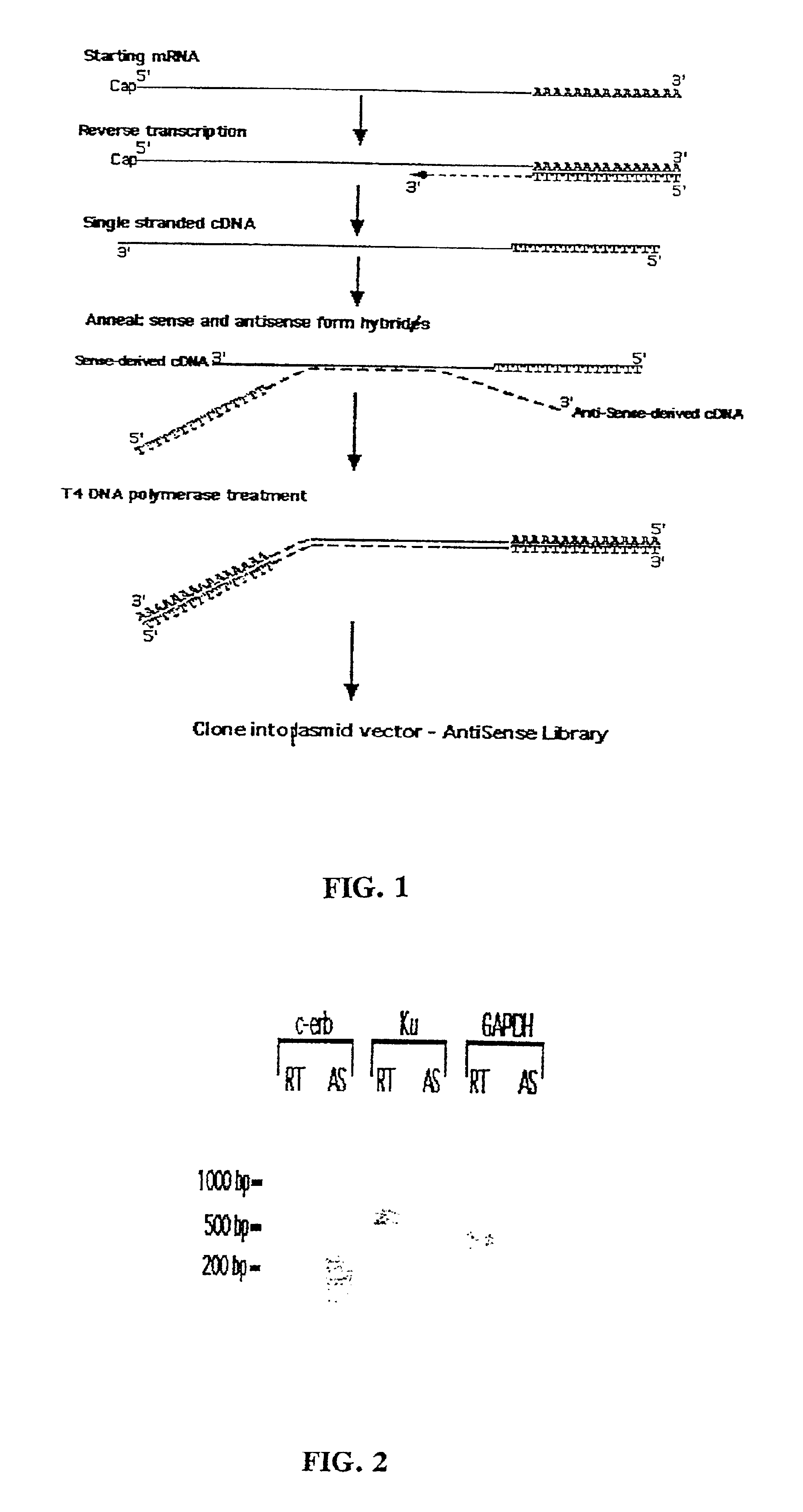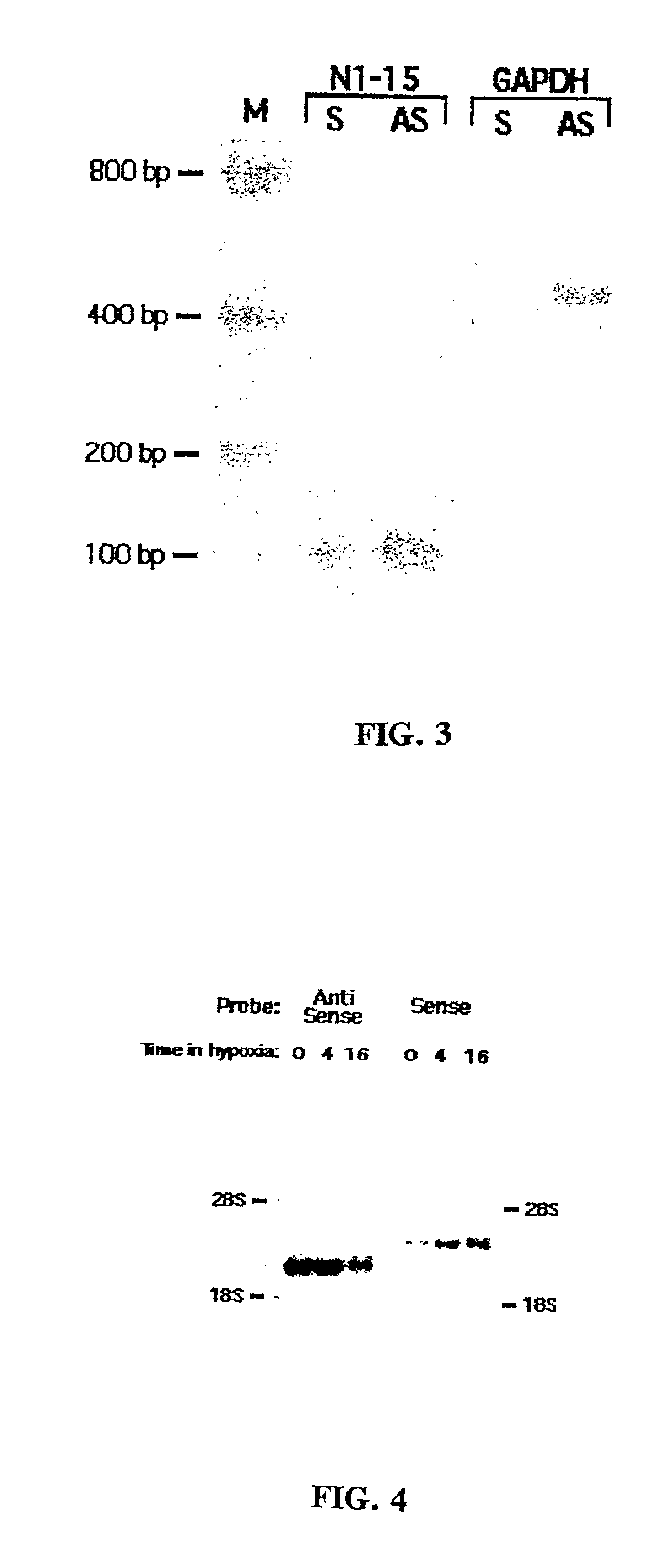Method for enrichment of natural antisense messenger RNA
a messenger and antisense technology, applied in the field of antisense messenger rna enrichment, can solve the problem of complex view of many genes, and achieve the effect of improving the complexity of the simple view
- Summary
- Abstract
- Description
- Claims
- Application Information
AI Technical Summary
Benefits of technology
Problems solved by technology
Method used
Image
Examples
example 1
[0028]The antisense enrichment procedure according to the present invention, also designated as the Endogenous Antisense Identification (EASI) procedure, was applied to a human glioma cell line and shown in experiments to enrich for antisense mRNA / cDNA known to have a natural antisense mRNA. The experimental results and the materials and methods used in the experiments discussed in this example are provided below.
Materials and Methods
cDNA First Strand Synthesis:
[0029]Two μg of poly A+ RNA from human A172 glioma cell line were diluted with double distilled water (DDW) up to 6 μl volume. Secondary structure formation or self-annealing of RNA molecules is disrupted by incubation at 80° C. for 2 min and then quick chilled on ice. 4 μl of a 10 mM oligo dT (deoxythymidine) primer, which contains cloning / cleavage sites for the NotI restriction enzyme and has the sequence[0030]5′-TTCTAGAATTCAGCGGCCGC(T)18N1 (G,A,C)N2 (G,A,C,T)-3′ (SEQ ID NO:1)
(where 5′-TTCTAGAATTCAGCGGCCGC-3′, corresponding...
example 2
[0060]To produce probes for microarray analysis from the EASI enriched cDNA, the following procedure may be used (graphically represented in FIG. 5) RNA is derived from cell population A (A-RNA) and from cell population B (B-RNA). A reverse transcription reaction with regular oligo-dT is used to make single stranded cDNA from A-RNA (A-sscDNA). For B-RNA an oligo-dT that has an additional sequence of the T7 RNA polymerase promoter region is used (e.g., SEQ ID NO:29). This produces a single stranded cDNA population (B-sscDNA) that has the T7 RNA polymerase promoter (T7RPP) region at its 5′ end. Using the regular EASI method described in Example 1, the A-sscDNA and B-sscDNA populations are mixed, and allowed to anneal to each other. A DNA polymerase that also has a 3′ to 5′ exonuclease activity is then used (e.g., T4 DNA polymerase) to enrich for the population of cDNA that annealed to each other. The result of this reaction is a chimeric double stranded cDNA that has the T7 RPP on one...
PUM
 Login to View More
Login to View More Abstract
Description
Claims
Application Information
 Login to View More
Login to View More - R&D
- Intellectual Property
- Life Sciences
- Materials
- Tech Scout
- Unparalleled Data Quality
- Higher Quality Content
- 60% Fewer Hallucinations
Browse by: Latest US Patents, China's latest patents, Technical Efficacy Thesaurus, Application Domain, Technology Topic, Popular Technical Reports.
© 2025 PatSnap. All rights reserved.Legal|Privacy policy|Modern Slavery Act Transparency Statement|Sitemap|About US| Contact US: help@patsnap.com



